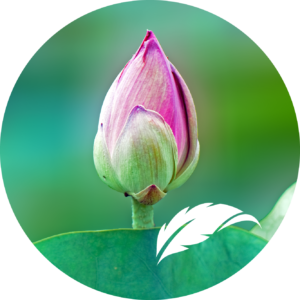More than ever, we need to cultivate our ability to maintain focus, monitor our emotions, and make purposeful choices.
The complexity and relentless pace of our world places exceptional demands on everyone. As our lives have become hyper-connected and our calendars over-scheduled, the distractions we face increase exponentially. With these distractions, our ability to focus has diminished, but our need to think clearly in order to make complex decisions has not. More than ever, we need to cultivate our ability to be fully present. Over the past decade, an increasing number of busy parents, burned-out executives, and anxious Millennials have discovered the advantages of incorporating the practice of mindfulness into their daily lives – learning to take purposeful pauses to create the space necessary to make wise choices and live in a balanced way.
There is a lot of talk about mindfulness today and there’s no “one-size-fits-all” answer to this often asked question, “What is mindfulness?”. For perspective, mindfulness has been practiced in Eastern cultures for thousands of years and attained mainstream status in the United States in 2014 when the cover of TIME Magazine hailed the “Mindful Revolution”, fueling the conversation about what it is – and isn’t – and the benefits of the practice.
When explaining what mindfulness is to audiences, I often refer to the wisdom of Jon Kabat-Zinn, Professor of Medicine Emeritus at the University of Massachusetts Medical School and a modern day pioneer in the field. He defines mindfulness as “paying attention in a particular way, on purpose, in the present moment, non-judgmentally”.
This ability to be “in the present moment” is illusive for many of us. In a 2010 study, psychologist Matt Killingsworth found that the average adult mind is not focused on the task at hand an average of 47% of the time. In other words, almost half of our waking attention is devoted to fleeting thoughts. The idea that we can recapture some of that time and refocus it on our priorities and our relationships should be reason enough to give mindfulness a try. Mindfulness starts with the self and is a state of active, open attention to the present. Practicing mindfulness generates the capacity to think clearly, stay focused on what matters most, sustain high performance, and become more empathic – all while enhancing one’s ability to embrace change, and manage stress.
Through mindfulness we expand our capacity to live in a way that creates conditions to thrive – for ourselves and our families, our colleagues, and our community. By carefully considering the words we choose, how we spend our time and energy, and what we say yes or no to, we calmly and decisively regain control of how we want our life will unfold.
Mindfulness is not about escaping from the world and spending weeks meditating at a spiritual retreat. You don’t have to give up your ambition or drive and dedicate hours to introspection. Mindfulness requires no particular belief system and is inherent in everyone.
Mindful living is best approached and most sustainable when we make simple and conscious shifts that are easily integrated into our day-to-day life. Creating space in our lives to allow for thoughtful moments will incrementally improve our overall effectiveness and fulfillment.
The practice of mindfulness is finding a foothold among those who find themselves exhausted by the “busyness” that defines our culture and is often revered by those who see a full calendar and a lengthy to-do list as a sign of status and importance. My journey towards mindfulness started as a way to relieve stress and create productive energy and has evolved into a sense of purpose to guide others along a path of intentional living. My definition of mindfulness is fluid and evolving and frequently I am fortunate enough to cross paths with others who share an interest in taking a metaphorical step back from the hectic pace that modern life demands and pause for a moment to consider the intentions for their life. With permission, I’m sharing the perspectives of a handful of my hometown colleagues and clients. Each of these Lakelanders are in a different place in their career and life journeys. None of them seek mystical revelations from a mountaintop guru, but all of them have one thing in common – the desire to live a life with purpose that brings them peace and allows them to bring joy to themselves and others. Here’s what they had to say…
Dena Weber, a wife and mother, shares with me that by “setting an intention to be present and in the moment with the people I love most”, her day is focused. Each task or commitment is held in the light of this intention and she carefully considers whether the time she spends on that task will allow her to fulfill her goal of truly being present. This type of focus on what matters most is at the heart of mindfulness. Darek Smith, an investment advisor, co-owner of a new construction business, and self-described “mindful dude” adds that by starting his day with a daily meditation of yesterday’s successes, failures, and issues, something he calls “taking out the trash”, he allows his mind to renew and start with a fresh perspective on the challenges of today. This present moment awareness is the key to a mindful view. Our minds are hard-wired to ruminate about the past and forecast the future rather than to simply take in all that is presented to us in the current moment. “Mindfulness,” Darek explains, “allows you to see things as they are, not through the filter of your past experience or your personal judgments.”
There are many opportunities throughout the day to practice present moment awareness. Kathryn Koch, a principal at Lanier Upshaw – an insurance and risk management firm, reminds us that even the drive to work can be full of opportunities for noticing the beauty of the world around us and the joy that is waiting for us. Kathryn’s morning routine requires that her drive to work is quiet- no radio, no phone- and she makes a conscious effort to take in her surroundings and appreciate the sunrise as she mentally prepares for the day.
Being focused on the present does not mean that planning and future goals are irrelevant or unimportant. In fact, being mindful keeps you connected to the aspirations and goals you set for yourself. Carol Davidson Hornsby- owner of Crave Fitness & Wellness pauses each morning before walking into her workplace and takes a moment to remind herself of the mission of her business and the impact she wants to have on her clients. “When I am leading from the heart,” Kelly Andrews, former Assistant Dean of Wellness at Florida Southern College and now a wellness coach shares, “my thoughts, goals and actions are in alignment and I am fully present”. This type of intentionality actually increases the ability of our minds to center on what must truly be accomplished to meet our goals and prevents distractions that merely occupy our time.
Just like any other new skill, mindfulness is something that requires practice. Each of the mindfulness practitioners I chatted with described the integration of mindfulness into their daily routine. Carol makes conscious choices about the food she eats, making sure that her meals are nutritious, pleasing to the eye and the palate, and most importantly, enjoyed without distraction from electronic devices. Darek encourages new clients to start with a five-minute daily meditation. “Anything longer becomes a tax and creates frustration” he says, but most people can set aside five minutes for a new routine. Darek compares the discipline required to start a mindfulness practice to starting a new exercise program – “Just like you cannot wake up one morning and say ‘I want to be strong’, then never go to a gym and expect amazing results. You cannot start a mindfulness journey and not expect to put in a little effort.” The changes you make do not need to be major interruptions to your routine, just small shifts that reinforce the importance of being aware of the present.
Neuroscience research has revealed tangible evidence that mindfulness training alters our brains positively impacting how we engage with ourselves, others, and our work. This research indicates that mindfulness is a learned skill and that practice strengthens connections between certain parts of our brains specifically the parts that regulate emotion and information processing. When practiced and applied, mindfulness can profoundly alter and “upgrade” the operating system of the mind. Through repeated mindfulness practice, brain activity is redirected from ancient, reactionary parts of the brain to the more evolved part of the brain, the prefrontal cortex which houses our executive command center. This research indicates that mindfulness should no longer be considered a “nice-to-have”. It is a “must-have” for all of us as a way to keep our brains healthy, to support self-regulation and enhance decision-making capabilities.
Five Pathways to Mindfulness
- Be intentional: How you begin your day will set the tone for what is to follow
- Take a purposeful pause: just breathe, journal, step outside and take in some fresh air, listen to peaceful music, read an inspirational quote
- Mind your thoughts: notice if they are serving you or sabotaging you and redirect if necessary
- Slow down: enjoy the simple moments in life and create the time to connect with others in meaningful ways
- Observe without judging: It’s human nature to constantly judge ourselves, others and situations, which is harmful to relationships and creates separation. To temper judgment, practice detached observation and acceptance
But what happens when we stray away from the practice of mindfulness? What happens when we fall back into our old ways of being due to a family or work crisis? Can the course of mindfulness be righted, or are we stuck in the rut of tasks and schedules and over-commitment? Often, the times when we perceive that it is too difficult to integrate mindfulness into our lives – when we are overtired, rushed, or anxious – are the times that necessitate the most awareness. Darek offers a unique perspective when he points out that when he does not perform his daily meditation, he sees that the anger, worry, and fear that manifest as a result affects not only him but also the people closest to him. “That’s when I realize how impactful my mindfulness practice has become,” and his commitment to making time for focused meditation is renewed. Taking time to slow down, notice, and process our emotions, rather than react in times of high stress, can result in better relationships and a greater sense of peace.
Each person I chatted with described similar results from their mindfulness experience- increased contentment, improved physical and mental well-being, and more resilience in the face of adversity. However, the overwhelming consensus was that mindfulness was more than just an exercise in personal growth. Carol describes it this way, “Mindfulness creates stronger connections – good, authentic, healthy connections – and relationships become deeper and more meaningful.” Imagine for a moment what this could mean for our communities? Could the practice of mindfulness ignite positive change in our hometowns and create an environment where people feel cared for as Dena envisions, or a place where there is more support, compassion, and more love as Kelly hopes for?
“The potential for a ripple effect in our society is huge,” Darek explains, “Consider this real-life example. A man who is known for being quick to anger with a short temper is required to go through mindfulness training in order to keep his job in leadership. One day, he is standing in the 10 items or less line at the grocery store behind a woman who clearly has more than 10 items and is juggling a huge diaper bag and a young child. As she pulls out a checkbook – yes, a checkbook! – To pay for her transaction, his anger flares, and he is ready to point out the many infractions committed by this woman to anyone who listens. Instead, he utilizes his mindfulness training and takes one deep breath and then another… a few moments later, his anger subsides to calm, the woman completes her transaction and he is able to move forward in line. With intentional effort, he chooses to focus on the positive and says to the cashier ‘Cute kid’. She responds with ‘Thank you, he’s my son. My husband was killed in Afghanistan and now I have to work to support our family. That was my Mom, she brings him to the store each day during my shift so I can see him before he goes to sleep.’ Pause and consider the impact of that brief exchange. Instead of anger and resentment that could have resulted from the man’s arguably justified outburst, his conscious choice created a real connection, mutual respect and understanding.”
Imagine the changes that might be possible if these kind of mindful moments were integrated in our daily exchanges with others in our community. Consider the ripple effect that mindfulness can have on how we treat ourselves and how we interact with those around us. The heightened awareness that comes from being in the present moment and taking a heart-centered action can have a very positive influence on our personal and collective well-being. I invite you to contemplate how mindfulness can play a role in your life and work and to envision the shift that might be possible in a world where people are more present, interconnected, and more frequently living and working together in harmony.
Grow with purpose…
Learn about our Mindful Leadership Program starting January 15


